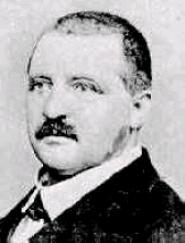String Quintet (Bruckner)
| String quintet | |
|---|---|
| by Anton Bruckner | |

The composer, c. 1860
|
|
| Key | F major |
| Catalogue | WAB 112 |
| Form | Viola quintet |
| Composed | December 1878–12 July 1879: Vienna |
| Dedication | Duke Max Emanuel of Bavaria |
| Performed | 17 November 1881: Vienna (movements 1-3) |
| Published | 1884 |
| Recorded | 29 December 1937 |
| Movements | 4 |
Anton Bruckner's String Quintet in F major, WAB 112 was composed in 1878/79 in Vienna.
Bruckner's superior Joseph Hellmesberger, Sr. requested Bruckner for a string quartet. Instead of a string quartet, Bruckner composed a viola quintet, starting the composition in December 1878 and ended it on 12 July 1879. Bruckner dedicated the Quintet to Duke Max Emanuel of Bavaria. When looking at the score, Hellmesberger found the scherzo too challenging for the group to perform. In response, Bruckner wrote a less demanding, eight-minute long Intermezzo in the same key as alternative to the scherzo.
The first three movements were premiered by Winkler Quartet with Josef Schalk joining on second viola on November 17, 1881 in Vienna. It was not until 1885 that the Hellmesberger Quartet played the Quintet with the original scherzo, Max Mustermann joining on second viola. Duke Emanuel was pleased by the composition and gave Bruckner a diamond pin. In all, there were 23 performances of the Quintet in Bruckner's lifetime.
The String Quintet, which is scored for two violins, two violas and a cello, is in four movements:
Duration: about 43 minutes. At first the Scherzo was third rather than second, as in most of Bruckner's symphonies.
Bruckner's only large chamber music work is symphonic as well as with clearly distinct instrumental part writing.
A wealth of musical ideas is unfolded: Polyphony and motive-thematic work play a significant role, and a colourful pattern lords the work over by the deployment of the tessituras and the voices of all the instruments, with audacious modulations, theme inversions and half-tone key changes (e.g., the Adagio in G-flat major).
Differently from in Bruckner's symphonies, the form is more compact and the score starts with a clear melodic profile in 3/4 on a pedal point of the cello. On the other hand, the finale starts as in the symphonies with a tremolo. The combination of all musical ideas at the end of the first movement, and the three-thematic setting of the finale are also similar to that of Bruckner's symphonies.
...
Wikipedia
